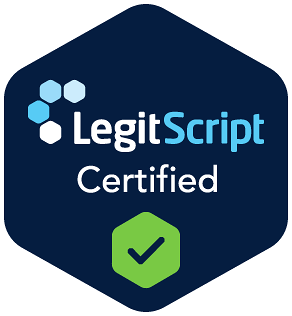Alcohol use disorder (AUD) occurs when a person loses control over his or her drinking habits by consuming alcohol either too often, too much, or too fast. This loss of control may cause the person, or people in the person’s life, stress or harm. Though alcohol use disorder is fairly common, it varies in severity. Severe alcohol use disorder is sometimes referred to as alcoholism or alcohol dependence.
About Alcohol Use Disorder (AUD)
According to the National Institute of Alcohol Abuse and Alcoholism (NIAAA), approximately 17 million adults, 18 and older, have alcohol use disorder and one out of ten children live with a parent that suffers from alcohol addiction. Alcohol use disorder is a medical condition that a person can be diagnosed with if he or she exhibits two or more alcohol addiction-related traits in the past year.
These traits may include anything from experiencing cravings for alcohol, continuing to drink even though it’s negatively affecting you emotionally and or physically, drinking so frequently that you spend most of your time either drinking or recovering from the effects of drinking, giving up on activities that you once enjoyed in order to drink, wanting to quit or cut back on drinking multiple times but being unsuccessful, and other alcohol addiction-related traits.
Being in a negative emotional state, losing control over your ability to stop drinking, and craving alcohol can all contribute to having alcohol use disorder. A person may have an increased risk of losing control over his or her drinking habits which could develop into alcohol use disorder if the person frequently participates in heavy and/or binge drinking. Binge drinking is defined by a person’s blood alcohol concentration (BAC) being 0.08% or more. The amount of alcohol a person consumes to reach a blood alcohol concentration of 0.08% will vary from person to person depending on the person’s body structure and gender. In general, it takes five or more drinks for men and four or more drinks for women to reach or exceed a blood alcohol concentration level of 0.08% or more. Heavy drinking can increase the risk of certain cancers including liver disease and harm to the person’s brain or other organs. While participating in binge or heavy drinking is risky, participating in these activities doesn’t automatically mean that a person has alcohol use disorder.
Treatment for Alcohol Addiction
Treatment for alcohol use disorder often involves a combination of both medicated assisted treatment (MAT) and psychotherapy (talk therapy). Common therapies to treat alcohol use disorder include brief interventions, motivational enhancement therapy, cognitive-behavioral therapy (CBT), and marital and family counseling.
Brief intervention discusses a person’s negative behaviors and drinking patterns in order to set goals for the person’s treatment. Motivational and enhancement therapy focuses on motivating the person to stick with a treatment plan and cut back on his or her drinking by discussing the pros and cons of seeking treatment. Both brief intervention and motivational and enhancement therapy consist of four short sessions. Cognitive-behavioral therapy (CBT) is a common type of psychotherapy that focuses on learning coping skills, managing stress, and understanding how a person’s thoughts influence his or her drinking patterns. Marital and family counseling centers around the patient and his or her family to help heal relationships and build a support system for him or her.
There are several medications that have been approved by the FDA to treat alcohol use disorder including Naltrexone, Acamprosate, and Disulfiram. Naltrexone helps reduce the craving for alcohol by blocking the receptors in the brain that makes a person feel good when he or she drinks. Acamprosate works on your brain to prevent alcohol cravings and is often used on people who recently quit drinking. Disulfiram causes people to experience unpleasant symptoms such as nausea and skin flushing whenever alcohol is consumed. All treatments will affect each person differently so it is important that treatments are specifically tailored to individual patients. A person may require additional treatments, types of therapy, or medication, especially if the person suffers from other mental illnesses.
The link between mental disorders and addiction is very prevalent and it’s important that both disorders are treated simultaneously because one affects the other. Many facilities offer treatments for specific mental illnesses such as anxiety, depression, obsessive-compulsive disorder (OCD), post-traumatic stress disorder (PTSD), and more.
Continuing With Sobriety
Relapse is a common part of addiction recovery. It is very unlikely that someone will go to rehab once and never drink again. Often, relapse occurs due to stressful situations, a negative mental state, or an inability to manage triggers. Relapse doesn’t mean failure or that treatment did not work. It is only a setback that when treated immediately can help you grow in your journey towards a sober lifestyle.
Alcohol use disorder is very common and, when untreated, can be detrimental to someone’s life by making it hard for the person to keep commitments and meet deadlines. Shoreline Recovery Center offers many different types of treatment including cognitive-behavioral therapy (CBT), medicated-assisted therapy (MAT), and family counseling to treat alcohol use disorder. Shoreline believes that your family should be involved in your recovery process in order to foster healing and a healthy support system.
It is also encouraged to participate in community activities to build connections and support with your peers. We value creating unique treatment plans for all of our patients to help you meet your treatment goals. Our professionals are dedicated to working with you to help you develop the necessary skills to manage addiction symptoms and prevent relapse. If you or a loved one is suffering from alcohol use disorder, please reach out to us and call (866) 278-8495 to learn more about what our programs have to offer.







